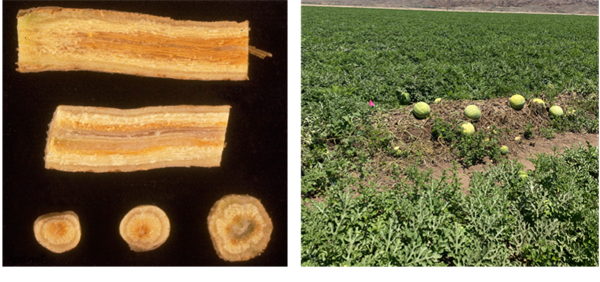-
Jun 16, 2021Cultural Practices and Summer Whitefly Management*
Spring melon harvest is well underway and will coming to an end in a couple of weeks. Accordingly, now is a good time to begin thinking about whitefly management in fall produce and melons crops. The first line of defense in avoiding whitefly issues in fall plantings is effectively controlling whiteflies on cotton this summer. But before considering whitefly management in cotton, it is important that whitefly populations be prevented from building up to large numbers in the spring melons that recently finished or are nearing completion of harvest. Although whitefly abundance has been about average this spring, we anticipate that they will rapidly increase over the next 2 weeks with the forecasted high temperatures and area-wide melon harvests. Growers and PCAs should not hesitate to knock these populations down on pre-harvest melons. Under current weather conditions (high temperatures) immature populations can rapidly build-up and cause honeydew/sooty cold contamination on fruit. Furthermore, the longer a harvested melon field remains untouched, the more whiteflies that can potentially be produced. Once harvest is complete, proper sanitation in spring melons is critical for preventing unnecessary whitefly migration into cotton and alfalfa. It is highly recommended that melon growers quickly destroy plant residue as soon as possible following harvest. A delay in disking under melon fields following harvest can provide a large source of adult whiteflies that will readily disperse into cotton and alfalfa, especially if they don't need to fly very far. These fields also potentially extend the host-acquisition period for CYSDV. A quick survey last week showed that overall CYSDV incidence is light (1-2% of fields infected), but almost all fields had some virus on field edges. Once melons have been disked and flat-watered, it is common for volunteer melons to germinate and emerge during July. The destruction of volunteer melons between spring and fall crops can reduce the source of whiteflies and virus inoculum available. This can be done by disking or applying a contact, burn-down herbicide to fields. Volunteer melons should be destroyed as soon as practical. Recent research has indicated that fall melons grown near spring melons with volunteers (<2 miles) are at a high risk of CYSDV infection. Ideally, it is in the Ag communities best interest to use sound cultural management practices, such as sanitation, to eliminate and avoid unnecessary sources of whiteflies before the fall produce and melon seasons begin. For more information on cultural management practices for whiteflies see: Cultural Practices for Whitefly Management in Desert Melons.

To contact John Palumbo go to: jpalumbo@ag.Arizona.edu












